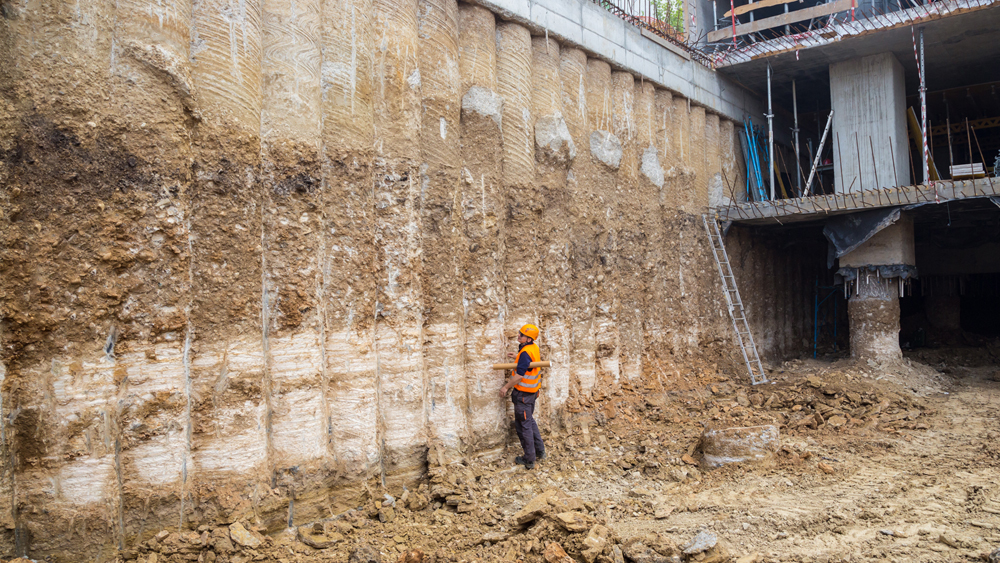Selecting the Right Geotechnical Engineers for Your Following Large-Scale Job
Wiki Article
Understanding the Necessary Duty of the Geotechnical Industry in Modern Building Projects and Framework Growth
The geotechnical sector is a keystone of contemporary building and facilities development, providing vital understandings right into dirt habits that directly affect task outcomes. Through advanced dirt assessments and cutting-edge design solutions, geotechnical professionals not just make certain structural stability but additionally address sustainability worries in the middle of evolving ecological requirements.Significance of Soil Evaluation
Dirt evaluation plays an important role in the geotechnical sector, acting as the foundation for informed decision-making in construction projects. Exact dirt assessment is vital for identifying the viability of a website for numerous types of frameworks, including household homes, commercial buildings, and bridges. By evaluating dirt make-up, moisture, thickness, and toughness web content, designers can expect possible challenges and minimize risks related to ground instability, erosion, and negotiation.The evaluation procedure normally entails a series of examinations and monitorings that give vital info regarding the subsurface conditions. This data notifies the style and construction procedures, guaranteeing that frameworks are improved strong ground with adequate support. Additionally, recognizing the dirt profile enables engineers to select ideal building methods and products, maximizing source use and minimizing expenses.
In addition to making certain architectural integrity, dirt evaluation adds to environmental sustainability. By recognizing prospective contamination or unfavorable results on surrounding environments, engineers can apply approaches to safeguard these all-natural resources. Generally, detailed soil evaluation is important in the geotechnical area, underpinning the safety and security, effectiveness, and environmental responsibility of building tasks.
Secret Geotechnical Strategies
A variety of crucial geotechnical methods are employed to evaluate and boost the security and performance of construction sites. One fundamental approach is dirt sampling and testing, which allows engineers to identify the chemical and physical residential or commercial properties of the ground. This info is vital for making educated decisions pertaining to foundation style and construction approaches.Another essential method is website characterization, which entails the in-depth assessment of soil and rock conditions through approaches such as borehole boring and in-situ testing. Methods like Criterion Infiltration Tests (SPT) and Cone Infiltration Tests (CPT) provide useful information on dirt toughness and stratigraphy.
Ground renovation techniques, such as soil stablizing and grouting, are likewise crucial in enhancing the load-bearing capability of weak soils. These techniques can mitigate negotiation and improve overall website problems.
Additionally, slope stability evaluation is crucial for recognizing prospective landslide threats and ensuring the safety of excavations. This analysis often utilizes mathematical modeling and limitation equilibrium techniques to predict dirt habits under numerous conditions.
Including these geotechnical strategies right into building and construction preparation not just maximizes task end results however additionally makes certain the long-term sustainability of framework development.
Impact on Building Security

Furthermore, effective geotechnical design includes carrying out mitigation methods for identified dangers. This might include soil stablizing strategies, keeping frameworks, or water drainage systems to reduce hydrostatic stress. By attending to these factors, building groups can lower the possibility of accidents and boost worker safety.
Furthermore, continual surveillance of website conditions is vital throughout building and construction. Geotechnical tools can provide real-time data concerning ground movement and security, enabling prompt interventions when needed.
Essentially, the geotechnical sector plays an essential duty in safeguarding construction projects. By prioritizing ground honesty and utilizing rigorous evaluation approaches, the geotechnical industry not just protects the labor force yet likewise contributes to the durability and reliability of constructed framework.
Sustainability in Geotechnical Practices

Additionally, geotechnical engineers are now using advanced innovations, such as geosynthetics, which enhance dirt security while lowering the quantity of material needed. This not only preserves sources but also causes much less waste generation (geotechnical engineers). The combination of sustainable layout concepts right into geotechnical engineering urges making use of renewable resource sources in construction procedures, additionally minimizing carbon exhausts
Additionally, comprehensive website analyses are necessary for determining prospective environmental effects before construction starts. By carrying out these assessments, geotechnical specialists can establish methods that minimize negative effects, making certain conformity with environmental policies. In general, the focus on sustainability within geotechnical methods not just adds to the long life and strength of framework yet additionally advertises an accountable method to land and source monitoring. This dedication is important for promoting sustainable development in the contemporary construction landscape.
Future Trends in Geotechnical Design
Advancement is driving the future of geotechnical engineering, as arising innovations and techniques reshape the sector. The integration of advanced data analytics and expert system is established to transform site examination and risk analysis, making it possible for designers to make even more informed decisions based on real-time data. Moreover, using geosynthetic materials is getting grip, supplying lasting options that boost soil security and reduce environmental impact.An additional substantial pattern is the adoption of automated and robotic systems for tracking and building and construction procedures. These innovations not only boost precision but also improve safety and security by lessening human involvement in unsafe settings. Additionally, the application of Building Details Modeling (BIM) in geotechnical style facilitates boosted cooperation amongst stakeholders, optimizing project delivery and decreasing expenses.
As climate modification poses brand-new challenges, the sector is progressively focusing on resilience and adaptability in design practices, ensuring infrastructure can withstand extreme climate occasions. Ultimately, the ongoing fad toward sustainability will drive technology in environment-friendly products and techniques, straightening geotechnical design with more comprehensive environmental goals. Jointly, these trends will shape a much more efficient, sustainable, and resistant geotechnical landscape for future tasks.
Conclusion

The geotechnical industry is a foundation of modern-day building and construction and framework advancement, offering crucial insights into dirt habits that directly influence project end results. geotechnical engineers.Dirt evaluation plays a vital role in the geotechnical sector, offering as the foundation for educated decision-making in building projects. Generally, extensive soil analysis is essential in the geotechnical field, underpinning the security, effectiveness, and environmental duty of building projects
Building safety is dramatically influenced by geotechnical techniques, as the stability and integrity of the ground directly influence the overall safety and security of a construction website.In conclusion, the geotechnical market is vital in modern building and construction and infrastructure advancement, providing crucial evaluations that ensure structural honesty and safety.
Report this wiki page